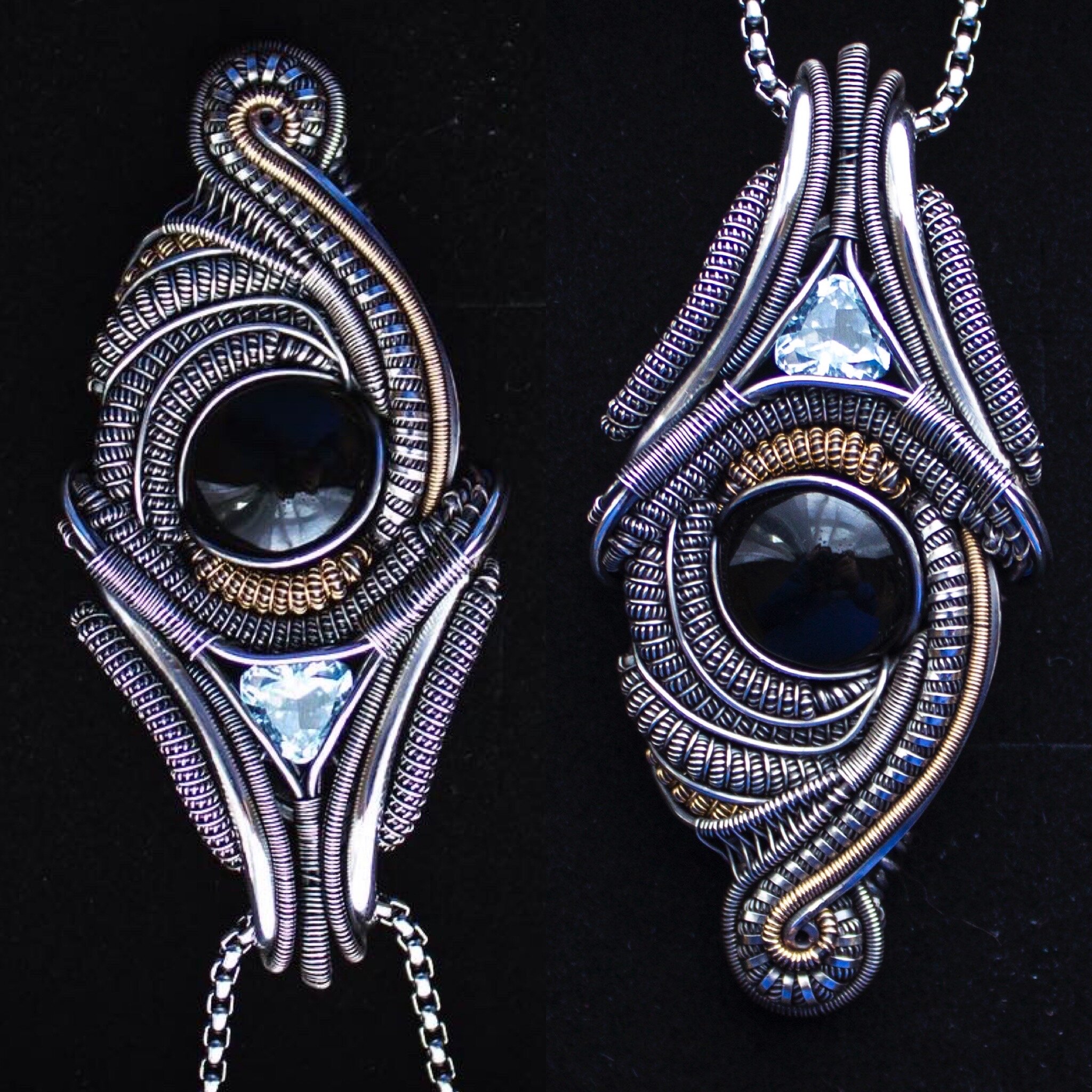Art School Tips that Apply to Wire Wrapping
I want to go over some rules that I learned in art school that can be applied to wire wrapping.
They are not rules that must be followed, but when viewing a successful pendant, a lot of times you’ll notice some of these principles apply. I suggest taking a look at pieces you’ve made and considering whether these elements were unintentionally followed, and even taking a look at what you felt was not successful and seeing if one of these principles could have helped.
Eye Movement
The way in which a viewers eye moves through a work of art. This is a concept that we usually always try to follow.
Understanding the way the viewer’s eye moves throughout a piece of art or a pendant can make or break initial intrigue, and a potential sale.
Your aim is to keep the viewer looking at the subject for a longer amount of time, and not leave early or stop short before truly seeing the whole piece.
S-Curve
The shape of the letter “S” has an aesthetically appealing and balanced shape; think of the Yin Yang symbol. It has been utilized in terms of figure posture and composition in paintings and sculptures alike.
In regards to wire wrapping, this curve can be used many times within a pendant as far as overall composition or smaller flow elements within the piece.
It works, because the curve provides movement, and the curled in tips of the S-Curve allow that movement to always be circled back into the piece.
Rule of Odds
Odd numbers can be more visually appealing than even numbers in art.
This is not always the case, but if you are drawing up designs that are asymmetrical & contains more than one stone of the same size, it will likely be easier to come up with a balanced layout if you use an odd number of stone.
The centerpiece gems in these three examples are all using 3 stones. If it were 4, it might give the appearance of a window sill, and would not have the same rhythmic flow.
Turn it Upside Down
Sometimes you can’t work through a flow issue. Everyone’s had this problem before, where you can’t figure out what’s not working and get frustrated. A great way to view your piece in new light is to turn it upside down.
After looking at the same thing for hours, your brain gets tired. This can change your perspective enough for you to see the issue with the design. A harsh line, or a side that feels too heavy can be seen more easily.
Check The Shape of Your Negative Space
If you have negative space in a piece, you should always intentionally put it there. Look at the shape of the space, and think of that space as an element itself.
Is it a triangle? A circle? Doesn’t matter too much, but make sure it’s aesthetically pleasing.
It should be there as an element in and of itself - Not out of laziness.
These tips are not the Basic Traditional Art Principles I’ve previously discussed, but rather odd tips that are good to consider. The reason these tips work are because they force you to consider the main traditional principles.
I hope you were able to learn something in this post, Andrew & I always tend to utilize one of these tips when we are having difficulties with a design, and they have helped us out a ton.
Please leave a comment below letting us know what you think of these tips!






